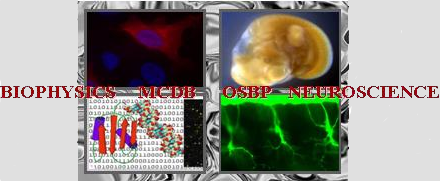Poster abstracts
Poster number 97 submitted by Alexander Winkle
TREK1 Contributes to Electromechanical Remodeling in the Context of Pressure Overload
Alexander J Winkle (Frick Center for Heart Failure and Arrhythmia; Dorothy M. Davis Heart and Lung Research Institute), Cematha M.L. Johnson (Frick Center for Heart Failure and Arrhythmia; Dorothy M. Davis Heart and Lung Research Institute), Drew Nassal (Frick Center for Heart Failure and Arrhythmia; Dorothy M. Davis Heart and Lung Research Institute), Austin Elliott (Frick Center for Heart Failure and Arrhythmia; Dorothy M. Davis Heart and Lung Research Institute), Simon Lococo (Frick Center for Heart Failure and Arrhythmia; Dorothy M. Davis Heart and Lung Research Institute), Mei Han (Frick Center for Heart Failure and Arrhythmia; Dorothy M. Davis Heart and Lung Research Institute)
Abstract:
Notwithstanding the massive advances made in patient care within recent decades, heart failure (HF) remains a leading cause of mortality in the US affecting 1.9% of residents. These patients are at increased risk for arrhythmia, decompensated heart failure, and stroke among other disease processes. The TREK1 K+ channel has recently been identified as a potential player in the regulation of excitability and coordination of downstream signaling. To understand the role TREK1 plays in electromechanical dysfunction, more focused study is necessary. It is known that the selectivity of TREK1 is altered in conditions of physiological stress. Following this, we hypothesized that alterations in TREK1 function in ventricular tissue negatively contribute to electromechanical dysfunction and maladaptive remodeling, furthering the progression of HF. To investigate the implications of TREK1 dysfunction, a cardiac-specific TREK1 knockout mouse model was used. These mice, along with wild-type (WT) littermates were subjected to transaortistriction (TAC) as a model of pressure overload. Electrocardiograms were taken for 6 weeks post-TAC, followed by ventricular myocyte isolation. From these myocytes, the action potential (AP), Ca2+ contractility, and response to STAT3 induction by IL6 stimulation were studied. These mice were found to exhibit accelerated electrical and pathological remodeling relative to the WT cohort in the context of pressure overload. AP prolongation and altered Ca2+ homeostasis were also observed in the KO-derived myocytes relative to WT. These cells also exhibited increased activation of STAT3 and decreased activation of CAMKII 2 weeks post-TAC. These findings implicate TREK1 in the development and regulation of cardiac dysfunction in the context of pressure overload with TREK1 likely responsible for both protective and detrimental alterations in cardiomyocyte function.
References:
1. Tsao CW et al. Circulation. 2023.
2. Masarone D et al. J Cardiovasc Dev Dis. 2017.
3. Cittadini A et al. Cardiology Clinics. 2022.
4. Bodnar M et al. Pflugers Arch. 2015.
5. Zhang H et al. J Physiol. 2008.
6. Unudurthi SD et al. J Am Heart Assoc. 2016.
7. Schmidt C et al. Prog Biophys Mole Biol. 2017.
8. Lugenbiel P et al. Basic Res Cardiol. 2017.
9. Abraham DM et al. J Clin Invest. 2018.
10. Decher N et al. EMBO Mol Med. 2017.
11. Thomas D et al. Neuron. 2008.
12. Chatelain FC et al. Proc Natl Acad Sci USA. 2012.
13. Ma L et al. Sci Signal. 2011.
14. Ma L et al. J Biol Chem. 2012.
15. Hund TJ et al. Cardiovasc Res. 2014.
16. Unudurthi SD et al. J Clin Invest. 2018.
17. Nassal DM et al. J Biol Chem. 2021
Keywords: TREK-1, Heart Failure, Pressure Overload
